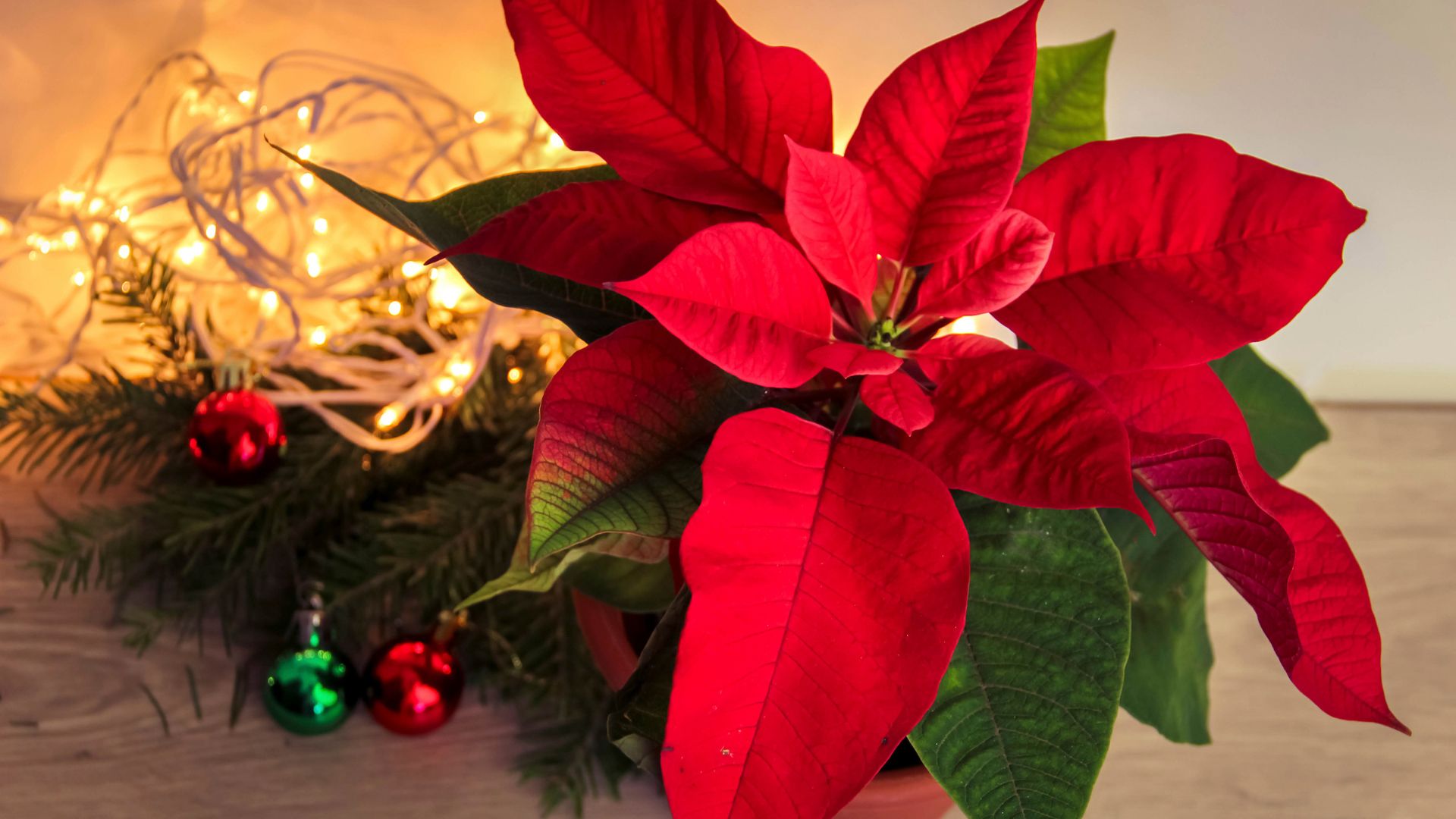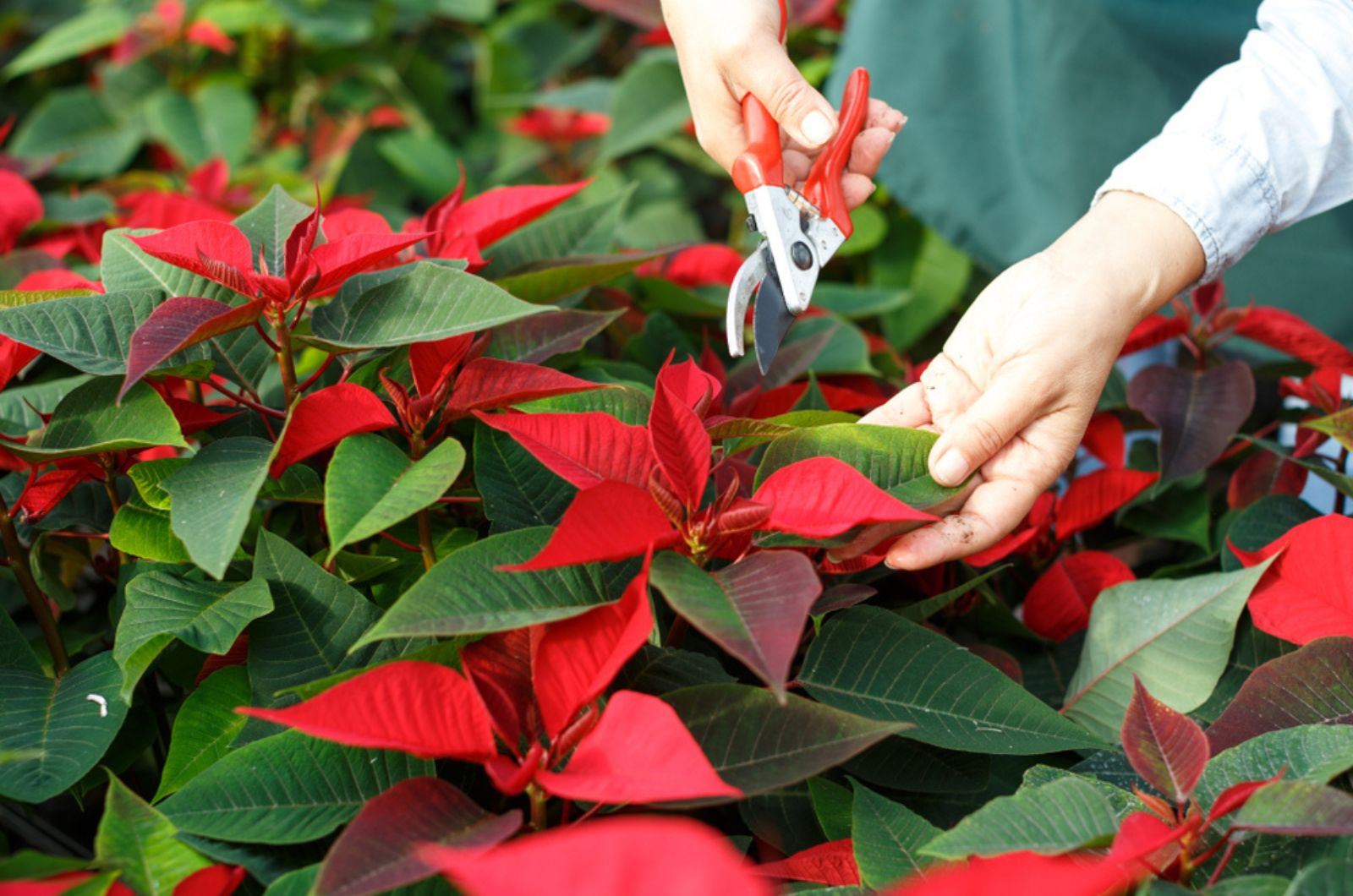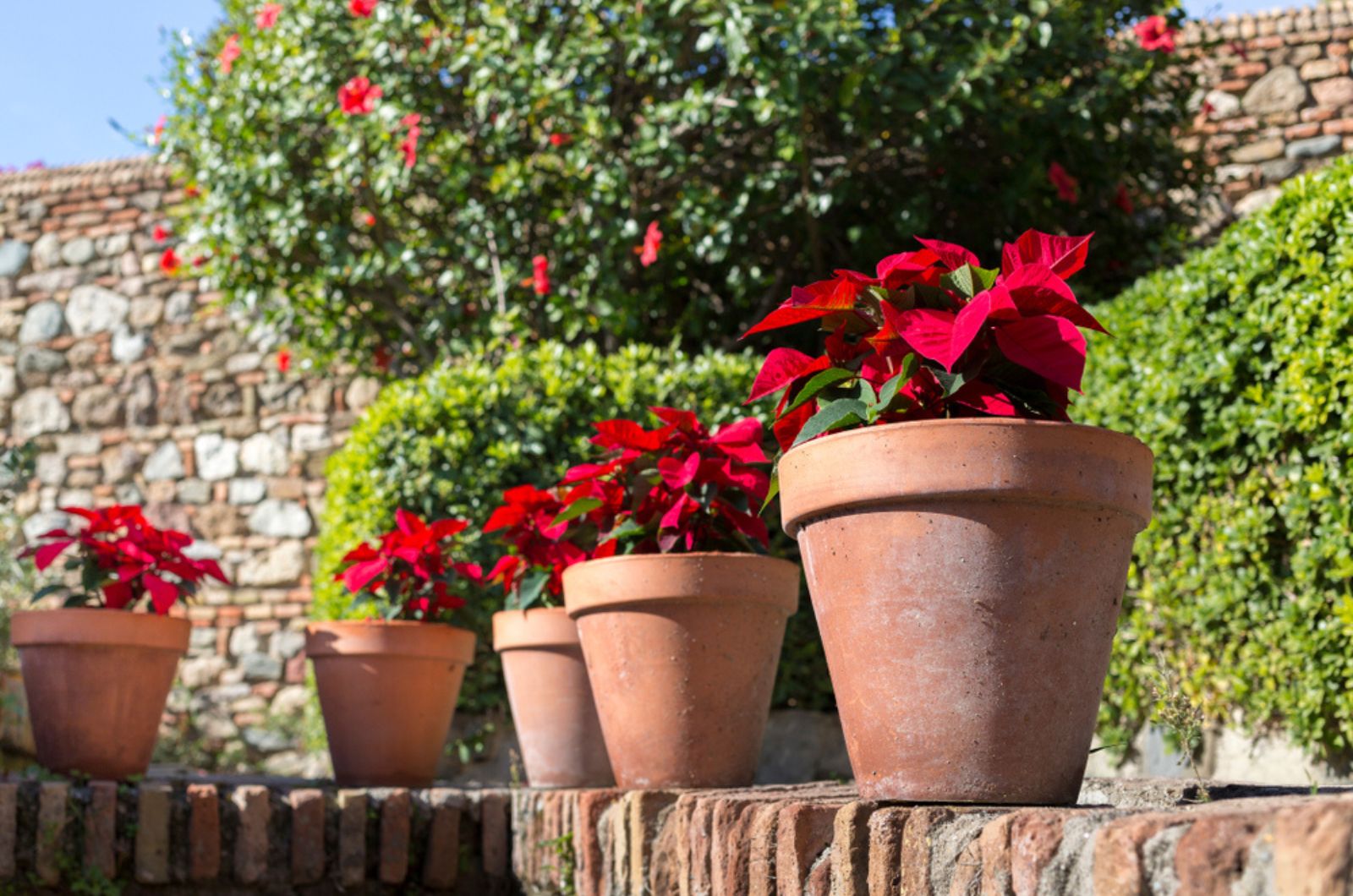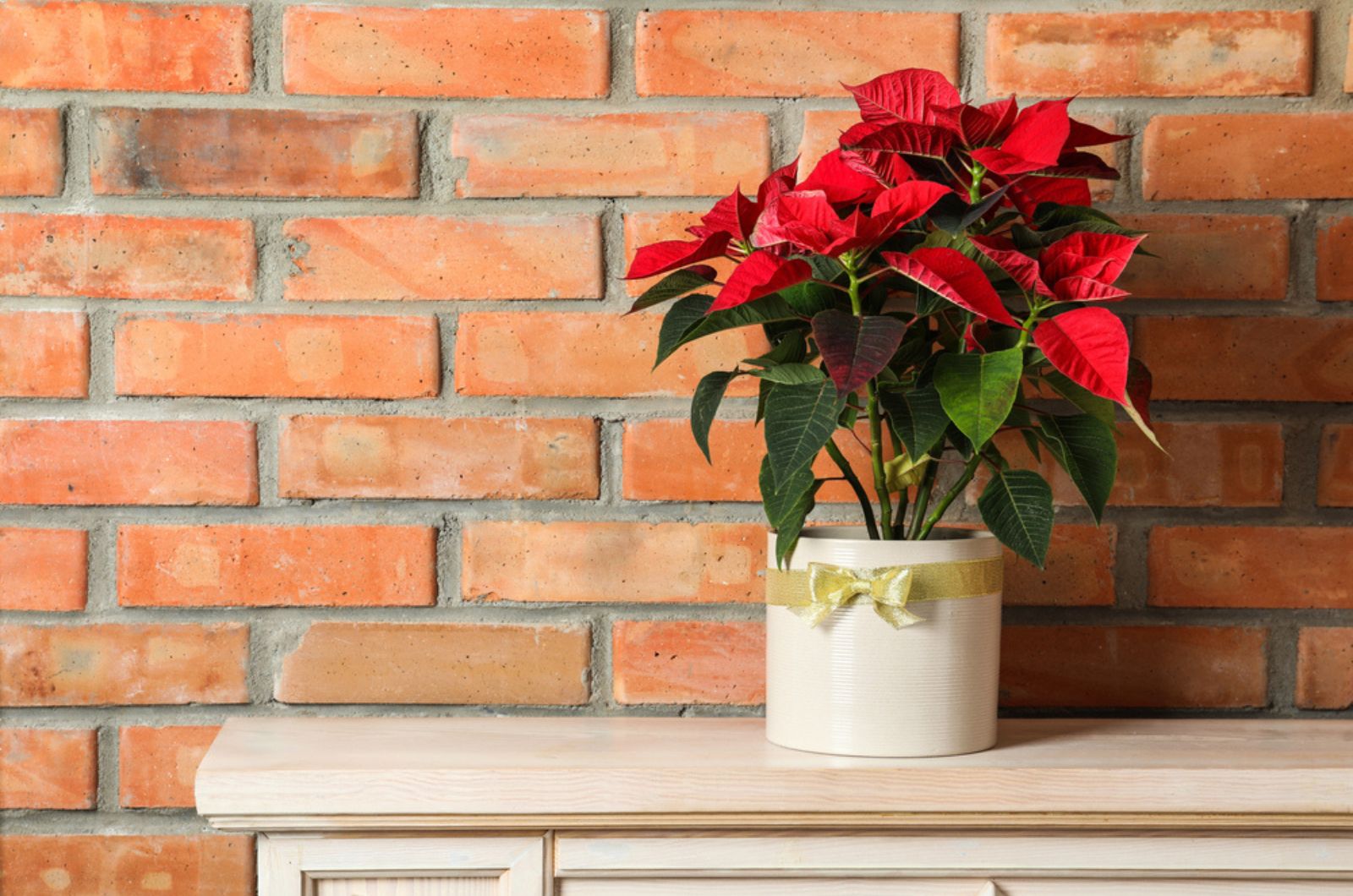I can’t imagine the Christmas season and decorations without Poinsettia plants. Many people buy blooming Poinsettias when they arrive in nursery centers and then discard them when the festive season ends.
But what if I told you that you can make a Poinsettia flower again? This means you won’t need to buy them the next season and you’ll have a wonderful display for months.
In this article, I’ll show you a few easy steps that will encourage reblooming in these plants and give you some tips for happy and healthy Poinsettias!
Let’s get started!
More About Poinsettia Blooms
There are a few things most people don’t know about Poinsettia flowers. The flowers are actually small and located in the center of the ‘petals’. Botanically speaking, these aren’t the true petals but rather bracts or modified plant leaves.
The red flowers of Poinsettias are the most popular but these plants come in other colors, such as creamy pink or pink. Some varieties generate petals that come in two colors, such as red and white, green and white, or light orange.
Poinsettias are referred to as ‘short-day’ plants, which means they start blooming when the days become shorter. With the proper care and the tips I’ll show you below, you’ll encourage your Poinsettias to rebloom next Christmas.
Step #1: Prune Your Poinsettia
The first thing you need to do is prune these plants after the flowering season.
You’ll know the time for pruning has come when the bracts start to shrivel and eventually fall off. This typically happens in January.
Your goal is to cut down the stems to approximately 6 inches above the soil line.
Don’t remove all the leaves; 2-3 leaves on each stem will encourage your Poinsettia to generate new growth.
Another benefit of pruning is keeping this Christmas plant looking tidy.
Step #2: Fertilize Twice A Month
After you prune the plant and it displays new growth, you should give it some additional nutrients.
The easiest way to do this is by feeding your Poinsettia. You can use an all-purpose houseplant fertilizer and make sure to prepare it according to the instructions on the label.
You’ll get the best results if you feed the plant every two weeks.
Watering is another essential factor in Poinsettia care, so make sure you irrigate when the top two inches of the growing medium dry out.
Step #3: Keep The Plant Outdoors During The Summer
These plants are mainly grown as houseplants but if you live in warmer climates and you want to encourage reblooming, you should keep your Poinsettias outdoors during the summer.
If you live in USDA hardiness zones 9 through 11, these plants will thrive outdoors.
Don’t plant your Poinsettias in your outdoor garden until all the danger of frost has passed. Late May is typically reserved for replanting in many regions.
The first step is to remove your Poinsettia from its original container. Pay attention to the location you select for replanting; you should ensure a spot that receives bright morning sun and some shade during the hot summer afternoons.
Step #4: Repot In Fall
Since the plant isn’t tolerant to low temperatures, you need to take it indoors when the fall arrives. Don’t wait until the nighttime temperatures go lower than 40 degrees Fahrenheit.
Your Poinsettias will grow pretty large over the summer, so you’ll most likely need to select a larger container.
These plants need good drainage, so opt for a loose and quick-draining potting soil amended with peat moss. Never allow the Poinsettia roots to sit in water because it will lead to root rot.
When choosing the container for your Poinsettia, make sure it has drainage holes in the bottom.
Step #5: Take The Plant Indoors
Here comes the most important part of the Poinsettia reblooming guide. As mentioned, these are ‘short day’ plants and if you want them to generate flowers, you need to keep them in darker conditions.
You need to find a room in your house where your plants can receive about 10 hours of bright light and approximately 14 hours of complete darkness.
This period of full darkness should not be interrupted because even a slight change in conditions may affect flower production. Believe it or not, any kind of light, including streetlights and light from the TV, can have an adverse effect on blooming.
If there isn’t such a room in your home, you can put your Poinsettia in a cardboard box and keep it closed for 14 hours.
Step #6: Tips For Keeping Poinsettias Happy And Healthy
It typically takes two months for Poinsettias to generate new bracts in the conditions described above.
If you notice the flower color isn’t the same as the previous year, don’t panic. Many Poinsettias are dyed and then put on the market. There isn’t such a thing as purple with glitter in nature!
As soon as you notice new bracts, put your Poinsettias in the desired spot. Cut back on feeding and fertilization during the colder months.
Here’s a video on how to maintain Poinsettias year-round!
That’s it! Follow our guidelines and you’ll have thriving Poinsettias that will reward you with their splendid flowers next Christmas!




